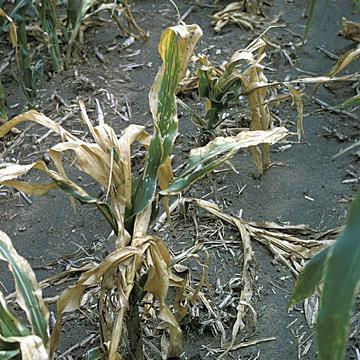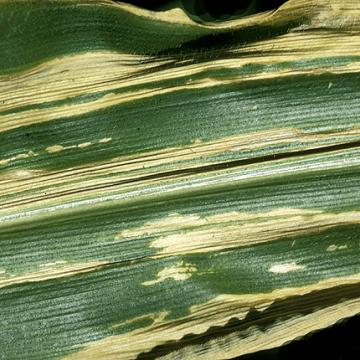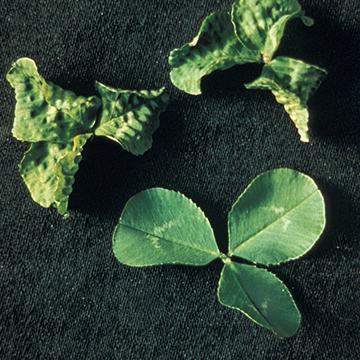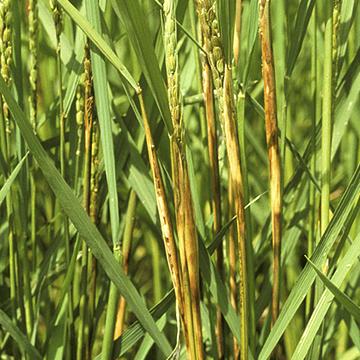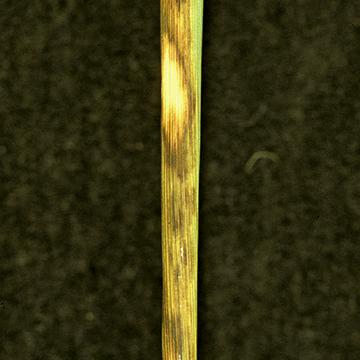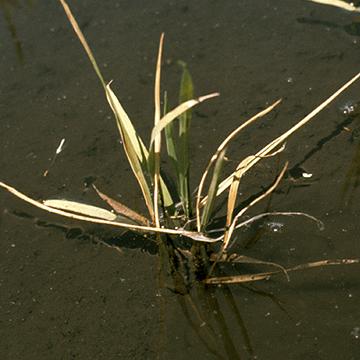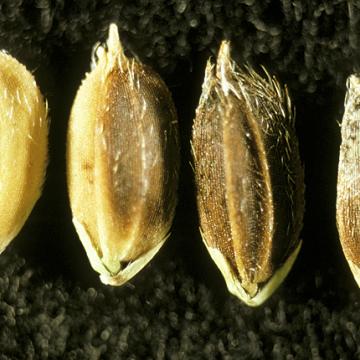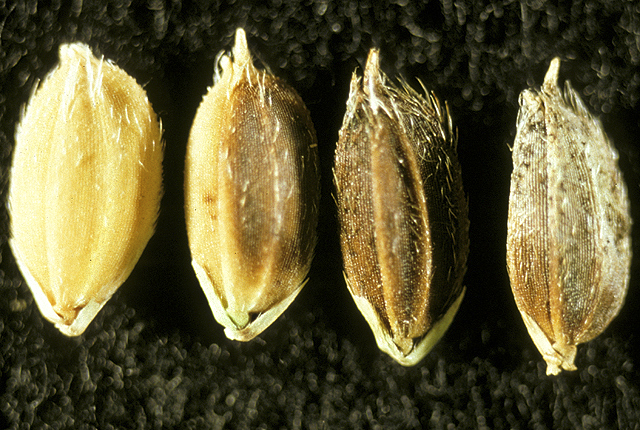DISEASE: Goss's bacterial wilt and blight
HOST: Corn (Maize)
Wilted, dying plants. Leaves have gray to light yellow stripes and irregular margins that follow leaf veins. Systemically infected plants usually have orange vascular bundles.
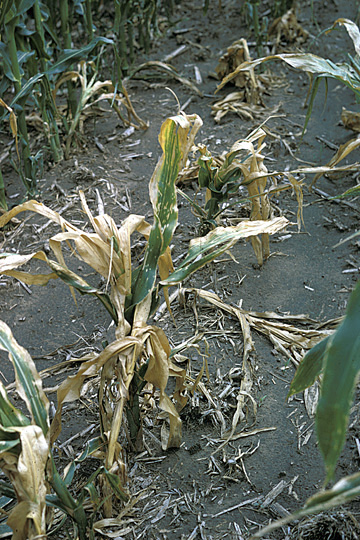
Goss's bacterial wilt and blight | Corn (Maize)
DISEASE: Goss's bacterial wilt and blight
HOST: Corn (Maize) (Zea mays)
PATHOGEN: Clavibacter michiganensis subsp. nebraskensis
PATHOGEN SYNONYM: Corynebacterium nebraskense
SOURCE: A. Vidaver
DISEASE: Goss's bacterial wilt and blight
HOST: Corn (Maize)
The disease causes necrotic leaf lesions, which typically have dark flecks (freckles) within the lesions (not seen here).
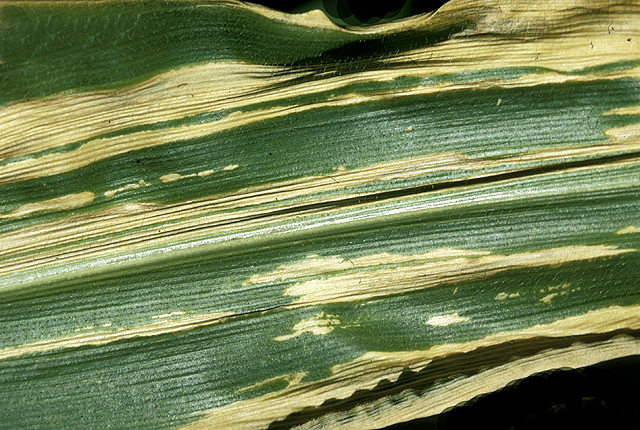
Goss's bacterial wilt and blight | Corn (Maize)
DISEASE: Goss's bacterial wilt and blight
HOST: Corn (Maize) (Zea mays)
PATHOGEN: Clavibacter michiganensis subsp. nebraskensis
PATHOGEN SYNONYM: Corynebacterium nebraskense
SOURCE: A. Vidaver
DISEASE: Rugose leaf curl
HOST: Clover
Two rugose, distorted white clover leaves and a healthy leaf. Rugose leaf curl is caused by an unidentified phloem-infecting bacterium.
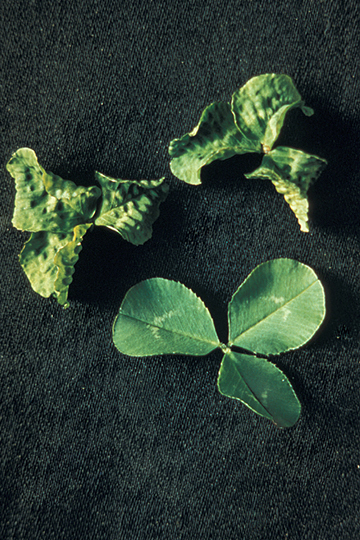
Rugose leaf curl | Clover
DISEASE: Rugose leaf curl
HOST: Clover (Trifolium repens)
PATHOGEN: Phloem-infecting bacterium
SOURCE: D. Teakle
DISEASE: Sheath brown rot
HOST: Rice
Disease symptoms typically occur on flag leaf sheaths from booting to heading stage and also on panicles. Water-soaked lesions on glumes turn light brown.
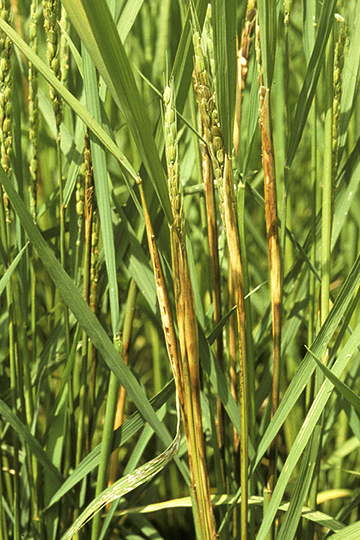
Sheath brown rot | Rice
DISEASE: Sheath brown rot
HOST: Rice (Oryza sativa)
PATHOGEN: Burkholderia fuscovaginae
PATHOGEN SYNONYM: Pseudomonas fuscovaginae
SOURCE: K. Miyajima, M. Goto
DISEASE: Sheath brown rot
HOST: Rice
Close-up of stem lesions.
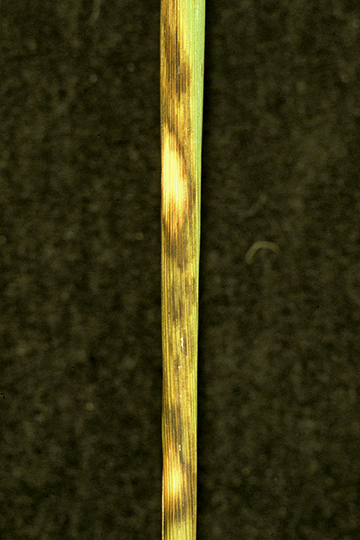
Sheath brown rot | Rice
DISEASE: Sheath brown rot
HOST: Rice (Oryza sativa)
PATHOGEN: Burkholderia fuscovaginae
PATHOGEN SYNONYM: Pseudomonas fuscovaginae
SOURCE: K. Miyajima, M. Goto
DISEASE: Sheath brown rot
HOST: Rice
Seedling with rot symptoms.
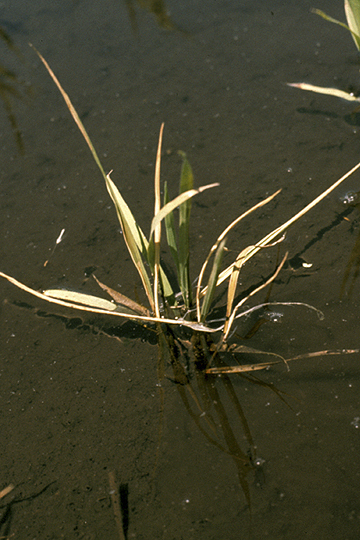
Sheath brown rot | Rice
DISEASE: Sheath brown rot
HOST: Rice (Oryza sativa)
PATHOGEN: Burkholderia fuscovaginae
PATHOGEN SYNONYM: Pseudomonas fuscovaginae
SOURCE: K. Miyajima, M. Goto


